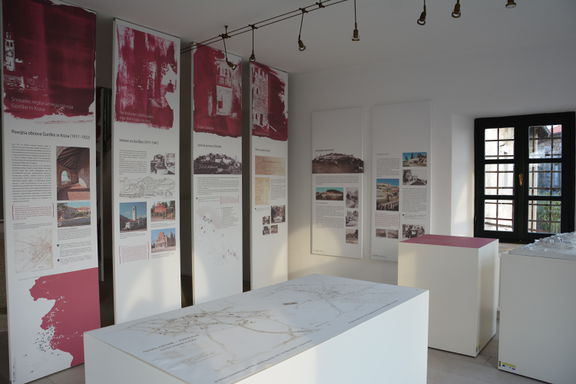Difference between revisions of "Maks Fabiani Foundation"
Anže Zorman (talk | contribs) |
Anže Zorman (talk | contribs) |
||
| Line 33: | Line 33: | ||
==Background== | ==Background== | ||
| − | The idea for the foundation was formed while the architect and art historian Marko Pozzetto (1925–2006) was writing his book ''Maks Fabiani - Vizije prostora'' [Max Fabiani - Visions of Space], which was published in 1997. Pozzetto has been working on Fabiani for 35 years, during which he has been actively collecting and categorizing relevant documentation and other materials. Upon its founding, he contributed these to the foundation. | + | The idea for the foundation was formed while the architect and art historian [[Marko Pozzetto]] (1925–2006) was writing his book ''Maks Fabiani - Vizije prostora'' [Max Fabiani - Visions of Space], which was published in 1997. Pozzetto has been working on Fabiani for 35 years, during which he has been actively collecting and categorizing relevant documentation and other materials. Upon its founding, he contributed these to the foundation. |
This archive is stationed at the renovated Štanjel castle and in 2010, it became a part of the [[Centre for Karst Architecture]]. | This archive is stationed at the renovated Štanjel castle and in 2010, it became a part of the [[Centre for Karst Architecture]]. | ||
Revision as of 07:06, 20 October 2015
-
6 Mar 2015
Trgovski dom izložba mesta, a permanent exhibition commemorating the 150th anniversary of the birth of Maks Fabiani conceived by Nataša Kolenc and produced in cooperation with the Maks Fabiani Foundation,
Today the archive is housed at the Centre for Karst Architecture in the renovated Štanjel castle, which is a Fabiani's creation as well. As he was a renaissance type of a man, being also a town planner, an arts historian, a speculative engineer and a painter, philosopher, poet and fiction writer, this archive holds a very varied collection.
Background
The idea for the foundation was formed while the architect and art historian Marko Pozzetto (1925–2006) was writing his book Maks Fabiani - Vizije prostora [Max Fabiani - Visions of Space], which was published in 1997. Pozzetto has been working on Fabiani for 35 years, during which he has been actively collecting and categorizing relevant documentation and other materials. Upon its founding, he contributed these to the foundation.
This archive is stationed at the renovated Štanjel castle and in 2010, it became a part of the Centre for Karst Architecture.
See also
- Centre for Karst Architecture
- Museum of Architecture and Design
- Slovene Association of Urban and Space Planners
- Plečnik Collection
External links
- Maks Fabiani Foundation website (in Slovenian)
- A catalogue of the foundation's archive
- A documentary on Maks Fabiani and Jože Plečnik (in Slovenian)
- An article of Fabiani's engineering projects (in Slovenian)
- Brochure on the CKA and Max Fabiani (PDF) (English, German, Italian)
- The Fabiani Path




